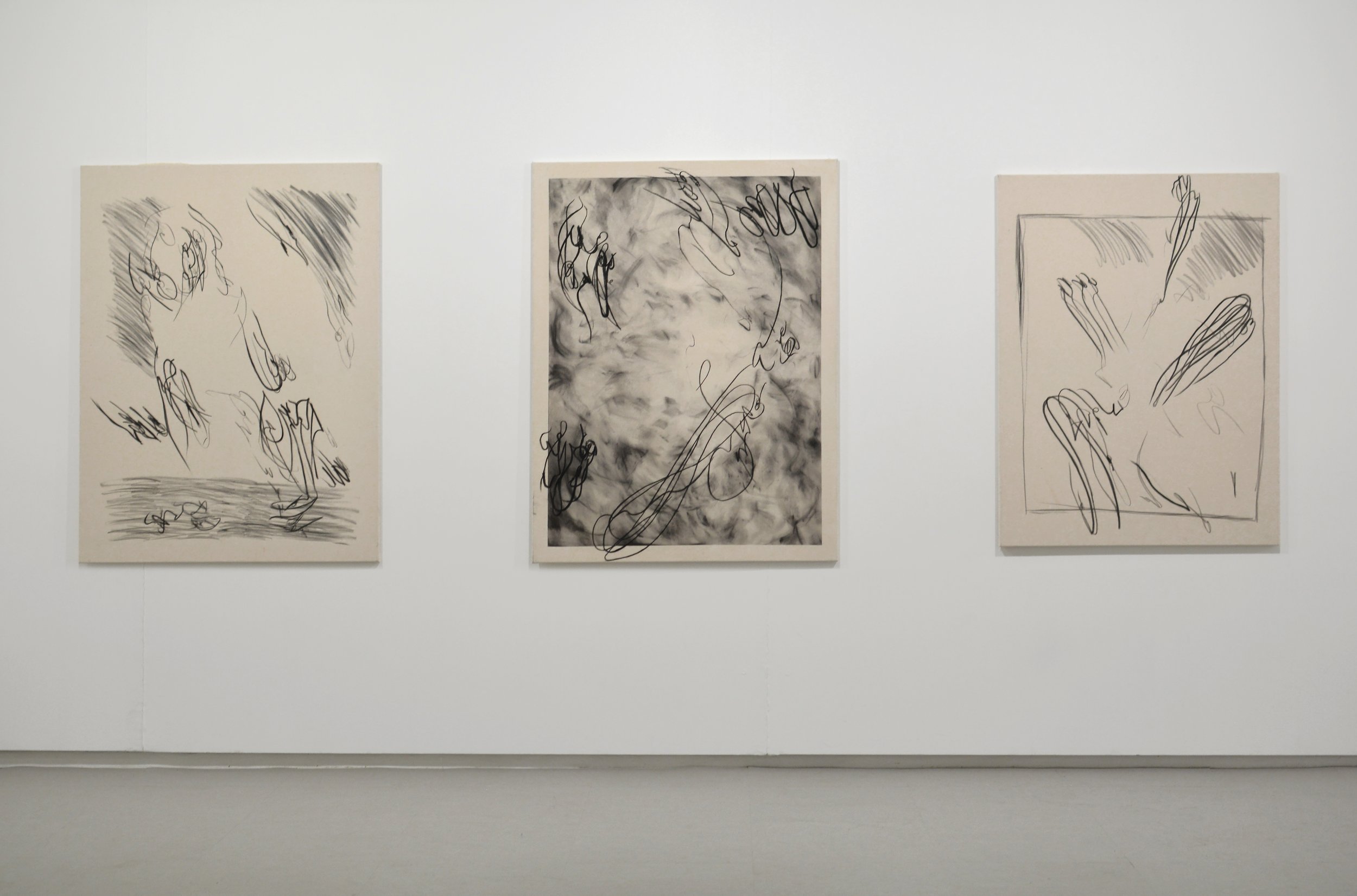
Expand & Collapse
July 2019
Solo Exhibition: Badr Ali
CITÉ INTERNATIONALE DES ARTS, Paris
Expand and Collapse translates a year of experimentation by the artist Badr Ali. His drawings offer potential oscillations between observation, reaction and documentation, evoking the inherent paradox of attempting to capture movement in a static piece. This idea manifests through Badr’s collaborations with dancers, in which he investigates the forms and curves that bodies generate while moving in space - as though tracing the negative space that their presence is occupying.
While being in this state, he refines the coordination between what the eye receives and the performative action by putting into place a form of sensory deprivation - allowing him become mentally immersed with the living experience. The rhythm of dance reflects in the artist’s quick gestures and the emerging lines and strokes drawn with oil bars and charcoal. The paintings become a protocole of movement, where actions are interpreted without the use of words.
Badr’s artistic research is deeply influenced by 18th century masterpieces; after an extensive practice of painting techniques from this epoch, the artist is now looking to express the emotional impressions that they have left on him. During his year-long residence in Paris, he is focusing on French schools of painting while creating a decontextualisation of small details that have captivated his attention in the oeuvres of Boucher and Fragonard. These elements form the base of new “emancipated” painting style, in which layers from the original image are either dismantled into fragments or replicated meticulously.
The artistic action described here resonates with the distinction made by one of the time’s greatest philosophers, Immanuel Kant, who proposed that the beautiful is limited while the sublime remains limitless. The mind in the presence of the sublime, attempting to imagine what it cannot grasp, takes pain in its failure but pleasure in contemplating the immensity of the attempt [1].
- Noam Alon, 2019
[1] Kant, Immanuel. Critique of Judgement, p. 109, §26



Expand and Collapse (Installation view), 2019, Corridor, Courtesy of the artist
